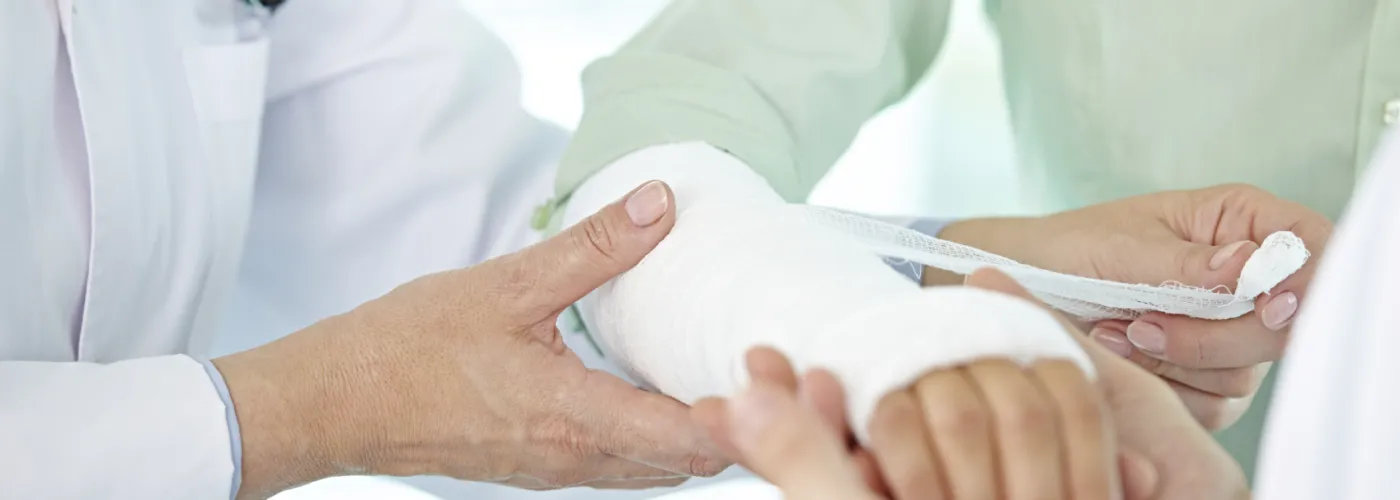
Trigger Finger

As a team of orthopaedic physicians and professionals, one of the conditions we treat here at Pinnacle Orthopaedics is trigger finger. In this post, we take a closer look at what this condition is, as well as its causes and symptoms. We'll also discuss treatment options commonly recommended by our orthopedic hand doctor and how they may help your condition.
What is Trigger Finger?
Trigger Finger describes a condition in which the finger gets caught either in bringing it down (flexion) or in straightening it out (extension). At first it may be painless and intermittent, but progressively gets painful and occurs with regularity. The pain is located at the base of the involved finger. True locking may occur which requires the opposite hand to break it free. At first the trigger finger is little more than an annoyance, which gradually progresses to interfere with most activities of daily living.
Also called stenosing tenosynovitis, this condition can affect any finger although when it affects the thumb, it is referred to as trigger thumb. Some patients may experience it in multiple fingers at the same time. It is also possible to have a trigger finger in both hands.
What are the Symptoms of Trigger Finger?
If you are experiencing any or all of the following symptoms, then you may be suffering from trigger finger:
Pain and stiffness in one or multiple fingers especially in the morning
Clicking or popping sound and sensation when moving the affected finger
A tender bump at the base of the affected finger
The affected finger gets locked in a bent position before suddenly popping straight
The affected finger gets locked in a bent position and cannot be straightened
What Causes Trigger Finger?
Trigger finger usually results from an overuse phenomenon. It comes on gradually. It usually is worse first thing in the morning. Repeated vibratory forces in the palm of the hand have been implicated.
Fingers have tendons, which are fibrous cords that attach bone and muscle together. The tendons have a protective sheath. When that protective sheath is irritated or inflamed, the gliding motion of the tendon is affected. This results in a trigger finger. Over time, as the tendon sheath continues to be irritated or inflamed, nodules may form in the tendon. These nodules hinder the smooth movement of the tendon even more. In more severe trigger finger cases, the patient may lose the ability to move the affected finger completely.
Risk Factors for Developing Trigger Finger
While the exact reason why the tendon sheath would be irritated or inflamed is yet to be known, there are factors that are thought to increase a person's susceptibility to developing a trigger finger. These are:
Having a job or hobby that requires prolonged gripping or repetitive hand use and movement
Having rheumatoid arthritis and diabetes
Having had carpal tunnel surgery within the last six months
Being a woman
If you notice trigger finger symptoms and you have risk factors, it's best to consult with a doctor to get the right diagnosis and start treatment immediately.
How is Trigger Finger Diagnosed?
The diagnosis usually can be made on the basis of a good history and physical exam. Oftentimes the finger will not "lock" in the doctor's office, however, your hand specialist can check for tenderness at the base of the involved finger. The doctor will also ask you to bend and straighten your fingers to observe their movements. Typically, the tenderness at the base of the finger and the abnormality in its movement are enough to deduce a diagnosis.
How is Trigger Finger Treated?
Treatment begin with conservative therapy. If an offending agent is identified, it is removed from daily activities. Non-steroidal anti-inflammatory drugs (NSAID's) are used to reduce the inflammation in the palm of the hand. Your Orthopedic Surgeon will inject a steroid solution directly into the tendon sheath that is inflamed.
Splinting of the metacarpal-phalangeal joint (MCPJ) is sometimes used in severe cases. Surgery is usually reserved for the refractory cases that remain symptomatic and painful. The surgical procedure involves a 1-inch incision to release the tight pulley under which the swollen tendon traverses. This often takes less then 10 minutes and is done as same-day surgery. The patient is encouraged to move the fingers almost immediately post-operatively. Symptomatic relief is immediate, and recurrence is very rare.
Get Proper Trigger Finger Treatment From Our Hand Doctor in Woodstock, Canton, Hiram, or Marietta
If you have been searching the web for "orthopedics near me" due to trigger finger symptoms, you've come to the right place. Pinnacle Orthopaedics is home to trained, certified, and experienced specialists who can help you live pain-free. You can schedule a consultation with any of our orthopedic physicians at the following offices:
To learn more about our services and schedule a consultation, please contact us.
The material contained on this site is for informational purposes only and DOES NOT CONSTITUTE THE PROVIDING OF MEDICAL ADVICE, and is not intended to be a substitute for independent professional medical judgment, advice, diagnosis, or treatment. Always seek the advice of your physician or other qualified healthcare providers with any questions or concerns you may have regarding your health.